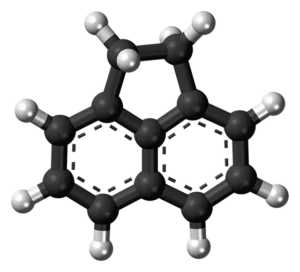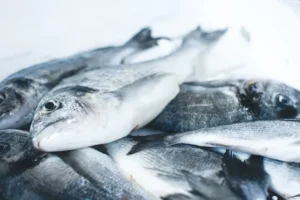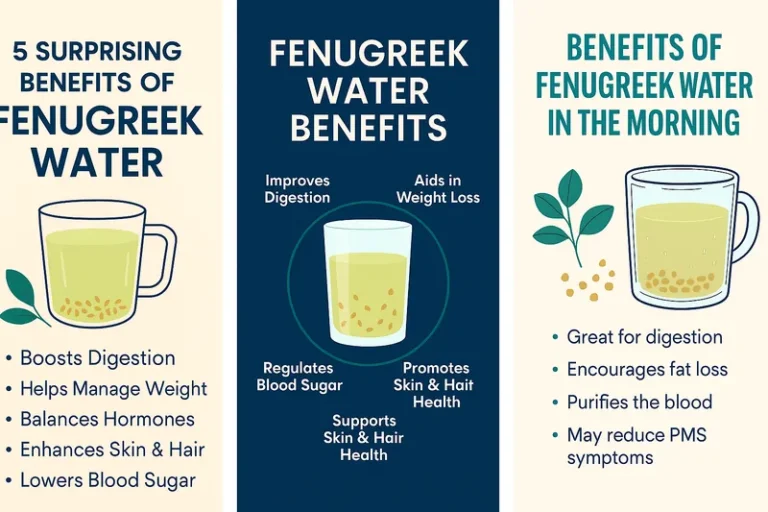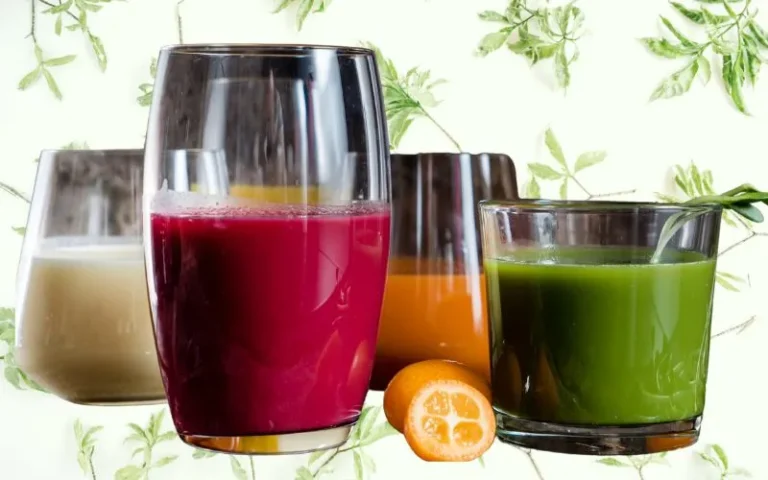Chemical toxins in food that is really worrying

Chemical toxins in food! Food is eaten to obtain calories and various nutrients. But if that food is rich in toxins or substances harmful to the body, then it is really worrying.
Unknowingly, we are constantly consuming various foods rich in toxins which have harmful effects on health. Being aware of food toxins and being careful about what to eat is important for healthy living.
This article discusses 6 food toxins in detail. Read till the end to know how to avoid toxin-rich foods.
Artificial trans fats
According to the World Health Organization (WHO), 5 billion people worldwide are at risk of the harmful effects of trans fats. Trans fats are one of the leading causes of heart disease. Every year, 500,000 people worldwide die prematurely from heart disease caused by the effects of trans fats. (WHO, 2023)
Trans fats increase the level of bad cholesterol in the blood and lower the level of good cholesterol. Eating foods rich in trans fats increases the risk of heart disease (especially heart attack and stroke), type-2 diabetes and Alzheimer’s disease.
Dr Tedros Adhanom Ghebreyesus:
Head of the World Health Organization, said that trans fat has no health benefits but is seriously harmful to health. Trans fat has no place (acceptability) in food, rather trans fat rich foods should be avoided for all.
Natural foods rich in trans fats should be eaten as little as possible. And instead of artificial foods, we should develop the habit of eating different types of nuts (peanuts, walnuts, pistachio nuts, walnuts, etc.), dates, sunflower seeds, pumpkin seeds and different types of fruits as healthy snacks.
Bisphenol A
Bisphenol A (abbreviated as BPA) is a chemical used in the manufacture of various plastic bottles and boxes. Bisphenol A is also used in the manufacture of cans, which usually contain various types of drinks. For example: Coca-Cola cans and beer cans.
Not all plastic bottles and boxes are enriched with BPA. Rather, some plastic materials are bisphenol free (BPA free).
Bisphenol A from bottles, cans or boxes can enter the body through spillage in food. Bisphenol A is harmful to health which can cause various complex diseases (type-2 diabetes, cancer, heart disease etc.). (Spritzler, 2022)
Avoid plastic and canned foods and drinks as much as possible to avoid BPA. It is best not to use plastic boxes when heating food in the microwave oven. Because the bisphenol A from the box can easily spread into the food under the influence of heat.
Polycyclic aromatic hydrocarbons
Polycyclic Aromatic Hydrocarbons (abbreviated as PAHs) are produced by burning biofuels (coal, oil, gasoline, etc.) and pollute the environment.

Grilled beef, chicken and fish are rich in polycyclic aromatic hydrocarbons. Also, this harmful substance is released from cigarettes.
PAHs increase the risk of various types of cancer (breast, colon, kidney and prostate cancer) in the body. Therefore, to avoid this harmful element, fish and meat should be cooked rather than grilled. Also the habit of smoking should be avoided.
Cinnamon
The scientific name of cinnamon is Cassia cinnamon which contains a type of chemical called coumarin. Coumarin increases the risk of various types of cancer, including liver damage, when consumed in excess.
Cinnamon is commonly used in cooking to enhance the taste and aroma of food. The amount of cinnamon used in cooking contains a very small amount of coumarin which is not harmful to the body.
A daily dose of 0.1 mg of coumarin per kg of body weight does not cause any problems. In other words, for a 70 kg person, a daily intake of up to 7 mg of coumarin would be considered safe.

A teaspoon (2.5 grams) of cinnamon powder can contain anywhere from 7 to a maximum of 18 milligrams of coumarin. But there is nothing to fear as cinnamon is not usually consumed in such a large amount. Safe levels for children are lower than for adults. Therefore, you should refrain from eating excess cinnamon without cooking.
Sugar
Sugar is called white poison. Almost everyone knows that sugar consumption is harmful to health. Sugar intake has been linked to increased risk of weight gain, type-2 diabetes and heart disease.

Sugar is added to enhance the taste and preserve the food. For example, biscuits, bread, cakes, bottled fruit juices, soft drinks and sweet foods should be avoided as much as possible.
Mercury in fish
Fish is a very healthy food that provides good quality protein and healthy fats (omega three fatty acids). However, it cannot be said that there are no harmful elements in fish. Because, fish contains mercury which can have a harmful effect on the nervous system.

Marine fish are slightly more likely to contain mercury than freshwater fish. However, the amount of mercury in fish is so small that the possibility of harm is very low. On the contrary, sea fish has more nutritional value, so fish should not be excluded due to fear of mercury.
Food toxins
In today’s fast-paced world, where convenience often takes precedence over scrutiny, the hidden dangers lurking in our daily sustenance demand our attention. The insidious presence of chemical toxins in our food has become an alarming concern. From pesticides used in crop cultivation to preservatives added to extend shelf life, the modern food industry is rife with substances that may compromise our health.
Often consumed unknowingly, these food toxins can accumulate in our bodies over time, leading to a myriad of health issues. It’s imperative for consumers to be vigilant and informed, seeking out organic and responsibly sourced options to minimize exposure. As we navigate the complex landscape of nutritional choices, understanding and mitigating the impact of food toxins on our well-being is not just a choice but a crucial necessity.
What is Chemical Toxins in animals?
Chemical toxins, ubiquitous in our environment, pose a significant threat to the well-being of both humans and animals. When it comes to animals, understanding the impact of chemical toxins is crucial for preserving biodiversity and maintaining ecological balance. Chemical toxins in animals refer to harmful substances, often synthetic in nature, that can adversely affect an organism’s physiological functions. These toxins can enter an animal’s system through various routes, including contaminated food sources, polluted water, or direct exposure to pollutants in their habitat.
The consequences of chemical toxin exposure in animals range from immediate health issues to long-term reproductive and developmental challenges. This complex issue requires interdisciplinary efforts from ecologists, veterinarians, and environmental scientists to comprehend the extent of the problem and develop strategies for mitigating its effects.
Finally Some Quote:
The pervasive presence of chemical toxins in our food is undeniably a cause for concern that demands urgent attention and action. As we traverse the complex landscape of modern food production, it becomes increasingly evident that our plates carry more than just nutrients; they harbor a hidden cocktail of potentially harmful substances. The insidious infiltration of chemical toxins poses a serious threat to our health, as these contaminants can accumulate over time, leading to a myriad of adverse effects on our well-being.
Awareness
The multifaceted nature of this issue necessitates a comprehensive approach that involves heightened awareness, stringent regulations, and a shift towards sustainable and transparent food practices. Consumers must be empowered with knowledge to make informed choices, advocating for the prioritization of food safety in the public domain. Industry stakeholders, too, bear a significant responsibility to adopt ethical and sustainable practices that prioritize human health over profit margins.
Toxin
In envisioning a future free from the specter of chemical toxins in our food, collaborative efforts are paramount. Governments, regulatory bodies, industries, and individuals must unite to implement and enforce robust measures that ensure the integrity of our food supply. Through a collective commitment to prioritizing health and sustainability, we can mitigate the risks associated with chemical toxins, fostering a food environment that nourishes and sustains us without compromising our well-being.
Source
Ultimately, as we strive for a future where our food is a source of nourishment rather than a repository of hidden dangers, the onus is on us to demand change, make informed choices, and work towards a food system that prioritizes the well-being of both individuals and the planet. The journey towards a toxin-free food supply begins with a single step, and each conscious choice we make contributes to the creation of a healthier and more sustainable world for generations to come.





